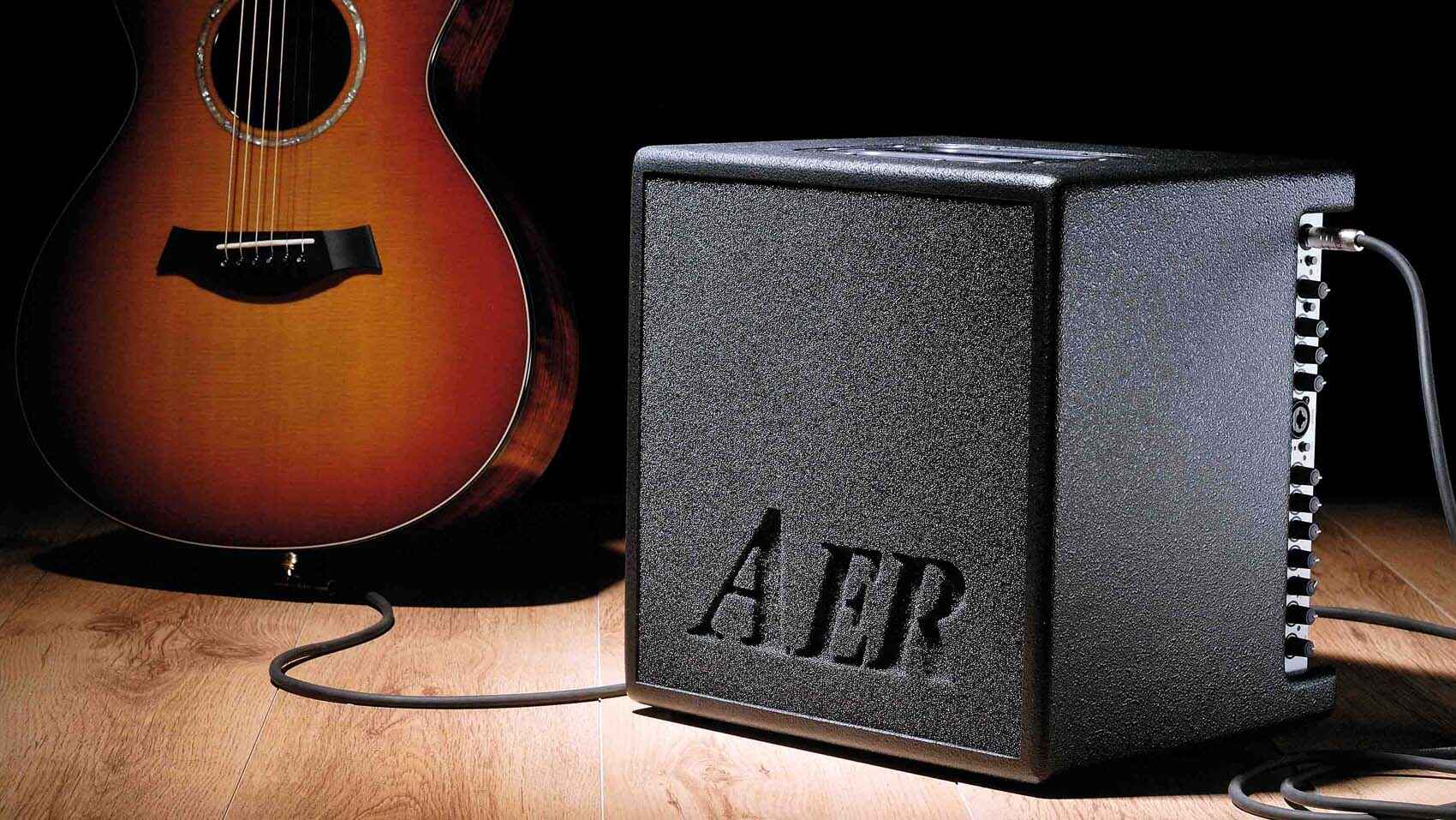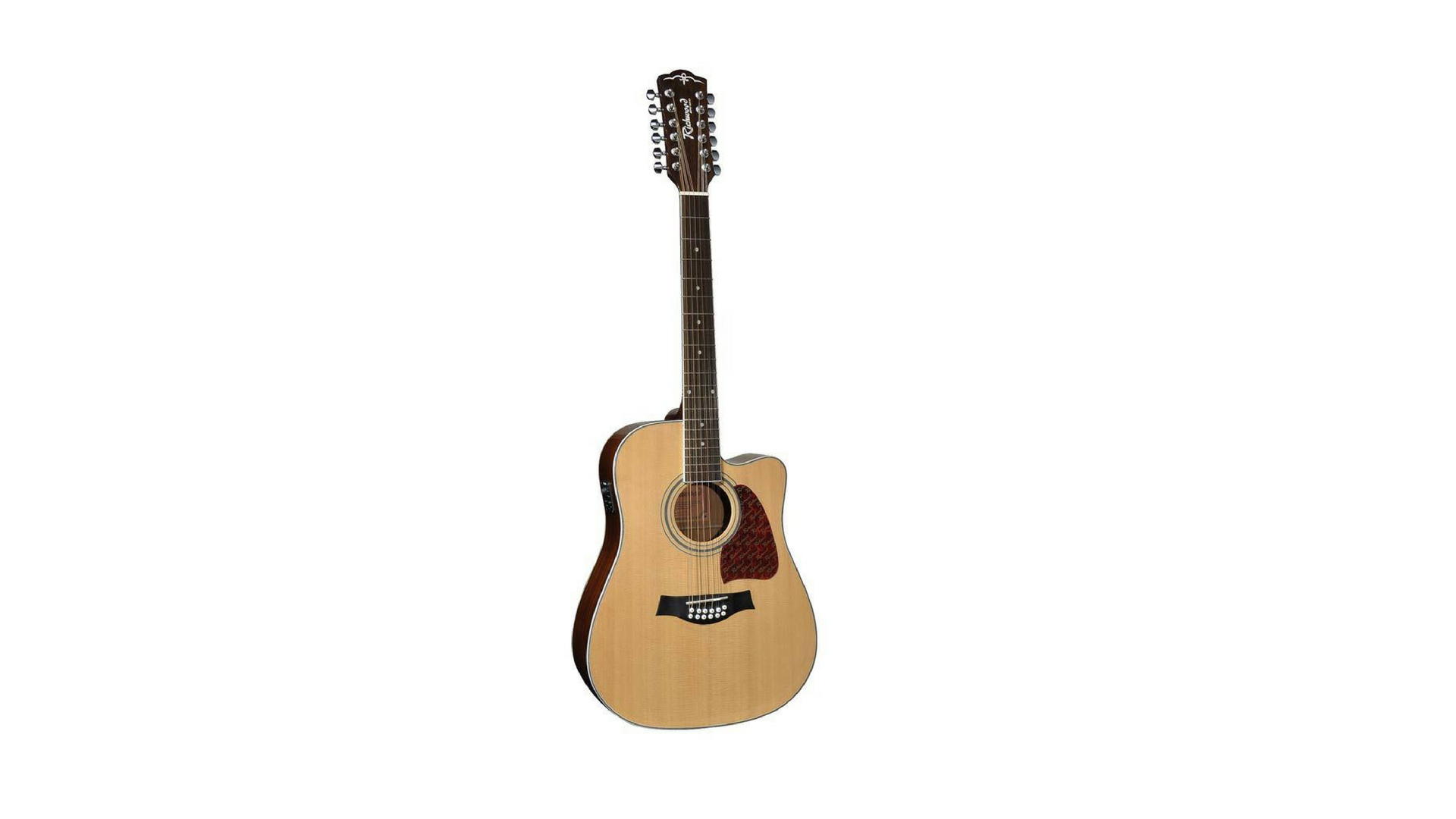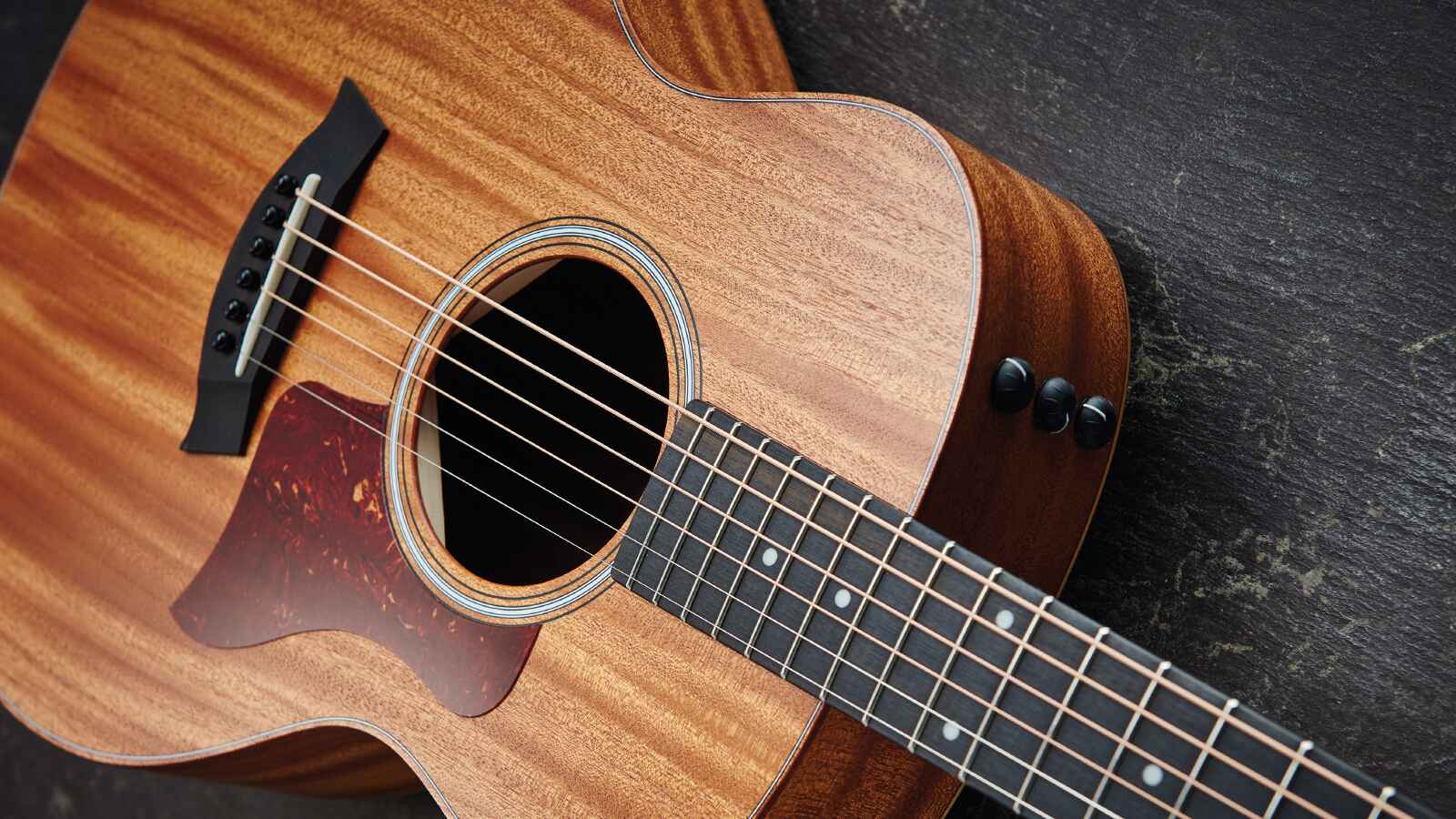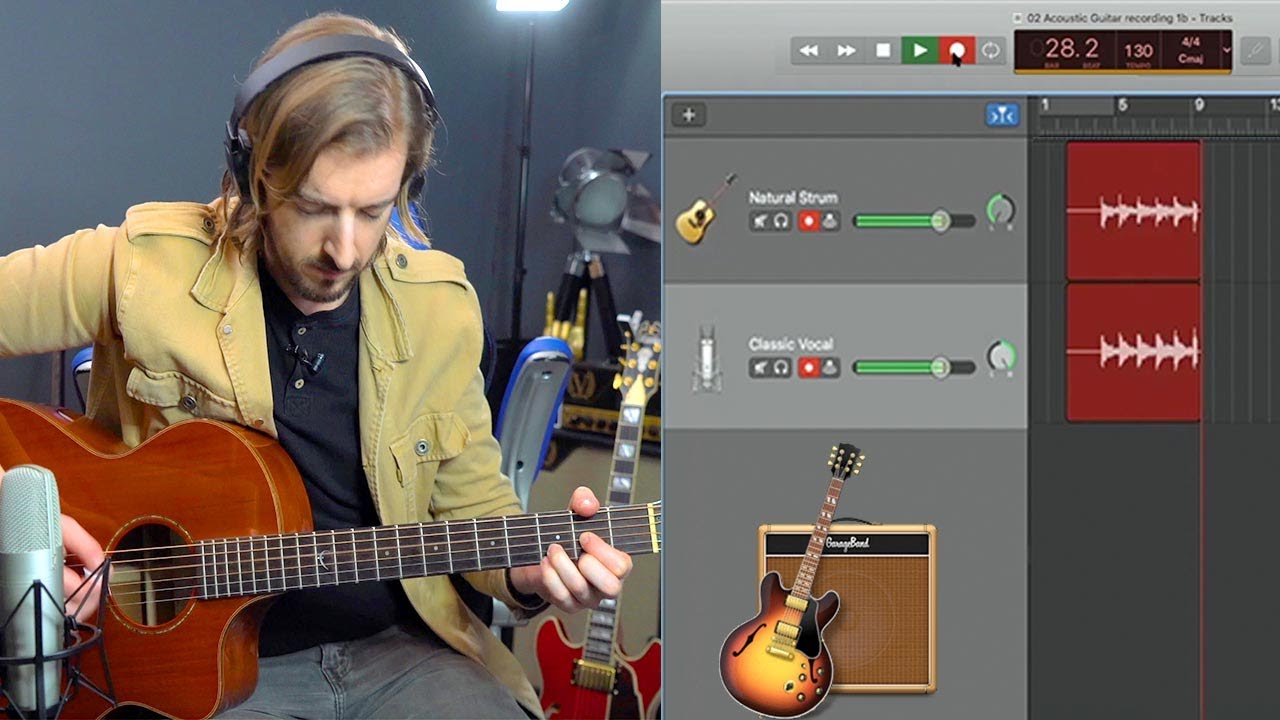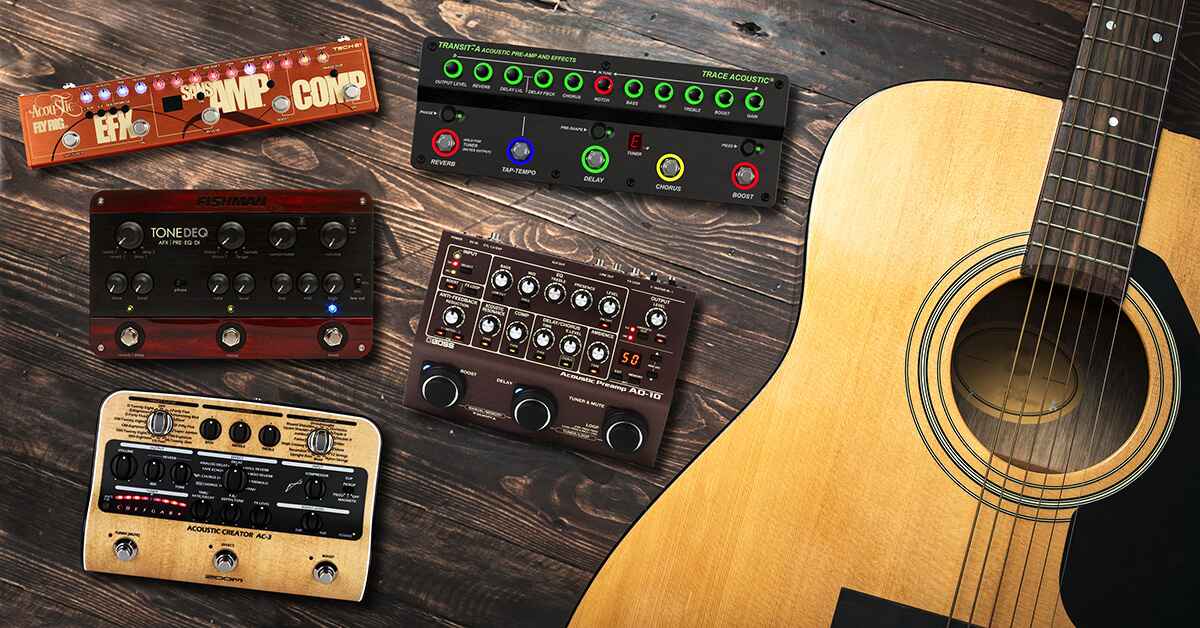Introduction
Setting up an acoustic guitar is an essential task that every guitarist should learn. A properly set-up guitar ensures optimal playability, sound quality, and overall performance. Whether you’re a beginner or an experienced guitarist, knowing how to set up your instrument can make a world of difference in your playing experience.
While taking your guitar to a professional luthier for a setup is always an option, being able to do it yourself gives you more control over the process and saves you time and money in the long run. With a few essential tools and some basic knowledge, you can easily check and adjust various elements of your acoustic guitar to achieve the perfect setup tailored to your playing style and preferences.
In this article, we will guide you through the step-by-step process of setting up your acoustic guitar. From checking the neck relief to adjusting the truss rod, nut height, saddle height, and intonation, we will cover everything you need to know to get your guitar playing its best. So, grab your tools and let’s dive into the world of guitar setup!
Tools Needed
Before you start setting up your acoustic guitar, you’ll need a few essential tools to ensure a smooth and efficient process. Here’s a list of the tools you’ll need:
- Guitar Setup Kit: Investing in a proper guitar setup kit is a smart move as it includes most of the tools required for the job. Look for kits that include items such as nut files, feeler gauges, string action ruler, and a truss rod wrench.
- String Winder: A string winder is a handy tool that makes changing strings quick and easy. It helps you remove the old strings and install the new ones efficiently.
- Capo: While not essential, a capo can be useful during the setup process. It allows you to simulate different fret positions and check the action and intonation at various points along the neck.
- Tuner: A reliable tuner is crucial for accurate intonation adjustment. Make sure you have a tuner that can accurately measure the pitch of each string.
- Allen Wrenches: Most acoustic guitars have a truss rod that requires an Allen wrench to adjust it. Check the size required for your guitar’s truss rod and have the appropriate allen wrench on hand.
- Small Screwdriver: A small screwdriver is handy for adjusting the saddle height, tightening screws, and making minor adjustments.
- Clean Cloth: Keeping a clean cloth nearby will help you wipe off any excess dirt or debris as you work on your guitar.
Having these tools readily available before you begin ensures that you won’t have to interrupt the setup process to search for missing tools. It also saves time and ensures a smoother experience throughout the setup process.
Step 1: Check the Neck Relief
The first step in setting up your acoustic guitar is to check the neck relief. Neck relief refers to the curvature of the neck, which affects the action and playability of the instrument. To check the neck relief, follow these steps:
- Tune the Guitar: Start by tuning your guitar to its standard tuning, ensuring that all the strings are at the correct pitch.
- Press down at First and Last Fret: Using your left hand, press down the low E string (6th string) at the first fret, and then simultaneously press down the same string at the last fret (usually around the 15th or 17th fret).
- Observe the Gap: While holding down the strings at the first and last fret, observe the gap between the bottom of the string and the top of the frets in the middle of the neck. This gap is the neck relief.
Now, depending on your playing style, you may prefer more or less neck relief. Generally, a slight amount of forward bow is desirable, meaning the middle of the neck should have a small gap between the string and the frets. This allows the strings to vibrate freely without buzzing on the frets.
If the gap is too large, you have excessive neck relief, also known as a back-bow. This can cause high action, making it harder to fret the strings and affecting intonation. On the other hand, if the gap is too small or nonexistent, you have a neck with too little relief, which leads to buzzing and low action.
If you notice that the neck relief needs adjustment, proceed to the next step to adjust the truss rod.
Step 2: Adjust the Truss Rod
After checking the neck relief in Step 1, you may find that the truss rod needs adjustment to achieve the desired amount of neck relief. The truss rod is a metal rod inside the neck of the guitar that allows you to adjust the curvature of the neck. Here’s how you can adjust the truss rod:
- Locate the Truss Rod Adjustment Point: The truss rod adjustment point is usually located on the headstock of the guitar, either at the base of the neck or near the nut. It may be accessed through a small hole or covered by a plastic or metal plate.
- Use the Correct Tool: Depending on your guitar, you may need an Allen wrench, a hex key, or a specialized truss rod wrench to adjust the truss rod. Ensure that you have the appropriate tool for your specific guitar.
- Make Small Adjustments: Insert the tool into the adjustment point and turn it clockwise or counterclockwise in small increments. One-quarter to half of a turn is usually enough to make a noticeable change. Remember, small adjustments are key to prevent damage to the neck.
- Check the Neck Relief: After each adjustment, recheck the neck relief by pressing down the low E string at the first and last frets. Evaluate the gap between the string and the frets at the middle of the neck. Continue adjusting until you achieve the desired amount of neck relief.
It’s important to remember that adjustments to the truss rod should be done gradually. Give the neck time to adjust to each change before making additional adjustments. If you’re not confident in adjusting the truss rod yourself, it’s always a good idea to seek assistance from a professional guitar technician.
Step 3: Check the Action at the Nut
Checking the action at the nut is an important step in setting up your acoustic guitar. The nut is the small piece located at the top of the neck where the strings rest before they reach the tuning pegs. The height of the nut can greatly affect the playability and intonation of the guitar. Follow these steps to check the action at the nut:
- Visual Inspection: Take a close look at the nut and observe if the string slots are properly shaped and evenly spaced. They should be smooth and not too deep or too shallow.
- String Height: Measure the height of the strings at the nut by using a feeler gauge or a string action ruler. Place the gauge or ruler on top of the first fret and measure the distance between the bottom of the string and the top of the fret.
- Optimal Action: The ideal action at the nut should be low enough to allow the strings to ring freely without buzzing, but high enough to prevent open string buzzing and maintain proper intonation. Aim for a gap of around 0.012 to 0.020 inches (0.3 to 0.5 mm) for the treble strings (E, B, and G) and slightly higher for the bass strings (D, A, and low E).
- Adjustments: If the action is too high, you may need to file the slots in the nut slightly deeper using nut files. Be careful not to remove too much material at once; it’s always better to make small adjustments and test the playability frequently during the process.
Having a properly adjusted nut can lower the playing effort, reduce string buzz, and improve the overall intonation of the guitar. If you’re unsure about making adjustments to the nut yourself, it’s recommended to seek guidance from a professional guitar technician to avoid damaging the nut or compromising the guitar’s playability.
Step 4: Adjust the Nut Height
Adjusting the nut height is a crucial step in the setup process of your acoustic guitar. The nut height directly affects the action of the strings and can greatly influence the playability and overall tone. Here’s how you can adjust the nut height:
- Assess the Nut Slots: Examine the nut slots and ensure they are appropriately sized and shaped for the strings. The slots should be wide enough to allow the strings to pass through freely, but not so wide that they rattle or sit too low.
- String Height: Measure the height of the strings at the first fret using a feeler gauge or a string action ruler. Place the gauge or ruler on top of the first fret and measure the distance between the bottom of the string and the top of the fret.
- Ideal Action: The ideal action at the first fret should be low enough to allow the strings to be pressed down easily without excessive buzzing. Aim for a gap of approximately 0.020 to 0.030 inches (0.5 to 0.8 mm) between the bottom of the string and the top of the fret.
- Adjustments: If the action is too high at the nut, you can carefully file the underside of the nut slots using a nut file. File a small amount at a time and frequently check the action to prevent removing too much material. Be sure to file the slots evenly to maintain proper string alignment.
Remember that it’s essential to make small adjustments and frequently test the playability as you adjust the nut height. It’s advisable to seek guidance from a professional guitar technician if you’re unsure about making these adjustments yourself to avoid damaging the nut or affecting the guitar’s overall performance.
Step 5: Check the Action at the Bridge
Checking the action at the bridge is an integral part of setting up your acoustic guitar. The bridge is where the strings are anchored to the body of the guitar, and the height of the bridge affects the playability and tone. Follow these steps to check the action at the bridge:
- Visual Inspection: Examine the bridge and ensure that it is aligned properly and securely attached to the guitar body. Look for any signs of damage or warping.
- String Height: Measure the height of the strings at the twelfth fret using a feeler gauge or a string action ruler. Place the gauge or ruler on top of the twelfth fret and measure the distance between the bottom of the string and the top of the fret.
- Desired Action: The ideal action at the bridge should allow for comfortable playing without excessive buzzing. Aim for a gap of around 0.060 to 0.090 inches (1.5 to 2.3 mm) between the bottom of the string and the top of the twelfth fret for the treble strings (E, B, and G). The bass strings (D, A, and low E) can have slightly higher action.
- Adjustments: If the action at the bridge is too high, you may need to adjust the saddle height. Most acoustic guitars have an adjustable saddle that can be lowered or raised. Use a small screwdriver or designated tool to turn the screws on each side of the saddle to make height adjustments. Make small increments and recheck the action frequently until you achieve the desired height.
Ensuring the proper action at the bridge is essential for comfortable playing and optimal tone on your acoustic guitar. However, if you are unsure about making adjustments to the bridge saddle yourself, it is always recommended to consult a professional guitar technician to avoid any damage to your instrument.
Step 6: Adjust the Saddle Height
Adjusting the saddle height is a crucial step in setting up your acoustic guitar and directly affects the action and playability of the strings. The saddle is located on the bridge and supports the strings. Here’s how you can adjust the saddle height:
- Visual Inspection: Examine the saddle and ensure that it is properly seated in the bridge slot and securely in place. Confirm that there are no breaks or damages on the saddle surface.
- String Height: Measure the height of the strings above the 12th fret using a feeler gauge or a string action ruler. Place the gauge or ruler on top of the 12th fret and measure the distance between the bottom of the string and the top of the fret.
- Ideal Action: The ideal action at the 12th fret depends on personal preference and playing style. A general guideline is to aim for a gap of approximately 0.060 to 0.090 inches (1.5 to 2.3 mm) between the bottom of the string and the top of the fret for the treble strings (E, B, and G). The bass strings (D, A, and low E) can have slightly higher action.
- Adjustments: If the action is too high, you may need to lower the saddle height. This can be done by carefully removing the saddle from the bridge and carefully sanding down its bottom surface. Make small increments and frequently check the action to prevent removing too much material. It’s crucial to keep the bottom surface flat and maintain the proper angle for intonation.
Having the right saddle height is crucial for achieving optimal playability and sound on your acoustic guitar. However, if you’re not confident in making these adjustments yourself, it’s always recommended to consult a professional guitar technician to ensure the integrity and performance of your instrument.
Step 7: Check the Intonation
Checking the intonation is a vital step in setting up your acoustic guitar. Proper intonation ensures that each note played on the fretboard is in tune, allowing for accurate and consistent pitch across all frets. Follow these steps to check the intonation:
- Tune the Guitar: Start by tuning your guitar to its standard tuning, ensuring that all the strings are at the correct pitch.
- Play the 12th Fret: Play the open string and then play the same string while pressing down on the 12th fret.
- Listen for Pitch: Pay close attention to the pitch of the note played on the 12th fret. It should be an octave above the open string.
- Compare Pitch: Use a tuner to compare the pitch of the note played on the 12th fret to the open string. If the pitch is sharp or flat, adjustments to the saddle position are needed.
- Adjust Saddle: To correct intonation, adjust the saddle position. If the 12th fret note is sharper than the open string, move the saddle slightly closer to the soundhole. If it is flatter, move the saddle slightly further from the soundhole. Make small adjustments and frequently recheck the intonation until in tune.
Repeat steps 2-5 for each string, ensuring the intonation is accurate across all strings. By properly adjusting the saddle position, you can achieve even intonation and ensure accurate tuning throughout the neck of the guitar.
It’s worth noting that perfect intonation can be challenging to achieve due to various factors, including the guitar’s design, string gauge, and individual playing style. Seeking assistance from a professional guitar technician may be beneficial if you’re struggling to achieve satisfactory intonation on your own.
Step 8: Fine-Tune and Test
After completing the previous steps and making necessary adjustments to the neck relief, truss rod, nut height, saddle height, and intonation, it’s time to fine-tune your acoustic guitar setup. This step ensures that everything is in proper alignment and harmony for optimal playability. Here’s what you need to do:
- Retune the Guitar: Start by retuning your guitar to its standard tuning using a reliable tuner. This step is crucial because the adjustments made during the setup process can cause the strings to go slightly out of tune.
- Test for Playability:
- Fretting: Play each string at different frets and ensure there is no fret buzz or excessive string tension. The strings should be easy to press down and produce clean and clear notes.
- Chords and Scales: Play some common chords and scales across the neck to test for any inconsistencies or issues with fretting and intonation. Pay attention to any fretting hand discomfort or excessive effort needed to produce clean sounds.
- Bend and Vibrato: Perform string bends and vibrato techniques to ensure that the strings respond well and return to pitch accurately. The action should allow for expressive playing without hindrances.
- Pick Attack: Test how the guitar responds to different pick attack intensities. It should be responsive and produce a balanced tone across different playing techniques.
- Make Final Adjustments: If you encounter any issues during the playability test, make small adjustments accordingly. This could include tweaking the truss rod, nut or saddle height, or intonation further until you achieve the desired playability.
- Repeat the Testing and Adjustment: After making final adjustments, retune the guitar and repeat the playability test once again. Continue this process until you’re satisfied with the guitar’s overall performance.
Remember, guitar setup is a dynamic process, and it may take some trial and error to find the perfect balance for your playing style and preferences. Take your time, be patient, and don’t hesitate to seek professional assistance if needed. With careful fine-tuning and testing, you can achieve an optimized setup that brings out the best in your acoustic guitar.
Conclusion
Setting up an acoustic guitar is a rewarding and essential process that allows you to optimize playability, sound quality, and overall performance. By following the steps outlined in this guide and using the necessary tools, you can achieve the perfect setup tailored to your playing style and preferences.
Starting with checking the neck relief and adjusting the truss rod, you ensure that the curvature of the neck is in balance. Then, checking the action at the nut and adjusting the nut height guarantees comfortable and buzz-free playing. Additionally, checking the action at the bridge and adjusting the saddle height maintains proper string height and intonation.
With the intonation in check, you can fine-tune the setup and perform thorough tests to ensure optimal playability across the fretboard. By making small adjustments and paying attention to the slight nuances, you can achieve a guitar that responds to your playing techniques with accuracy and ease.
Remember, the setup process may require some experimentation and patience to find the perfect balance for your instrument. If you are uncertain about making adjustments yourself, don’t hesitate to consult a professional guitar technician who can provide expert guidance and assistance.
Investing time in setting up your acoustic guitar pays off in the long run. A well-set-up instrument not only enhances your playing experience but also delivers better tone and improved performance. So, take the time to explore and refine the setup of your acoustic guitar, and enjoy the best possible playing experience for years to come.










